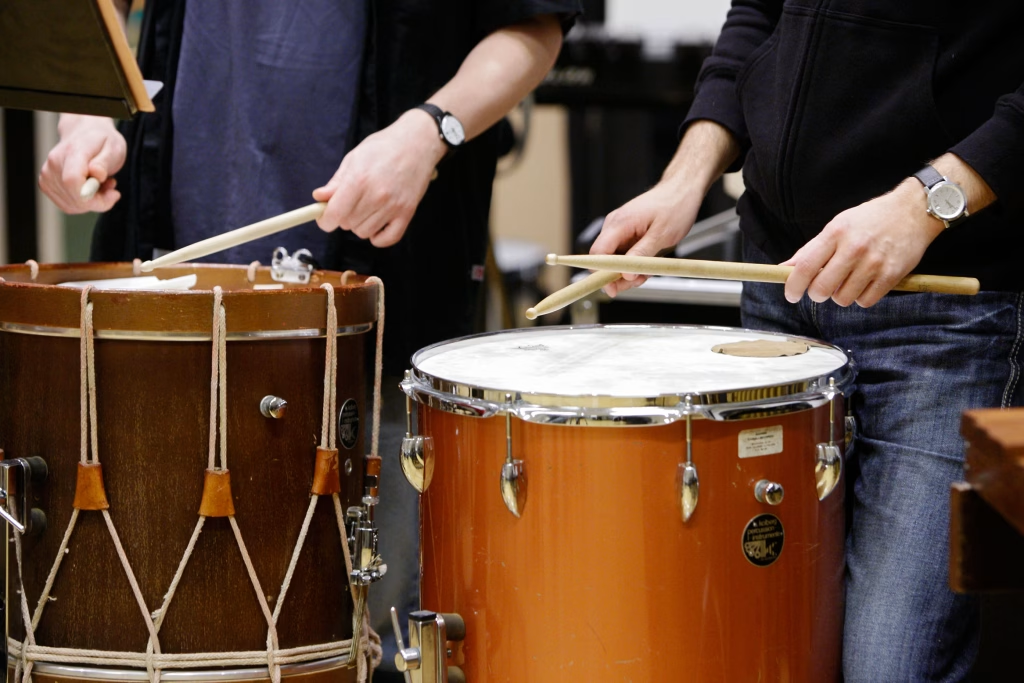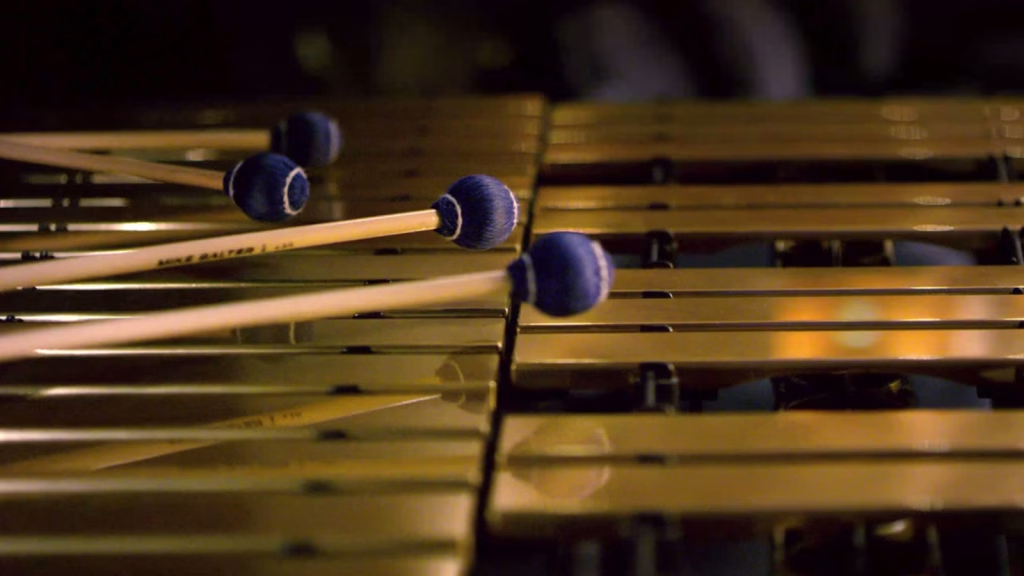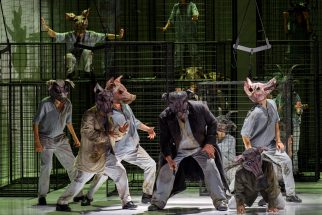
The chameleons of the orchestra pit
Do you know how many instruments a percussionist plays in the Orchestra of the FNO? While most musicians are dedicated to one, a percussionist’s repertoire might involve a whopping twenty different instruments, depending on the composition.

The percussion section of an opera orchestra is divided into two subsections: timpanists and percussionists. ”A timpanist only plays the timpani, but the basic set of a percussionist includes the bass drum, cymbals, triangle or snare drum – and often more than one of these,” says percussionist and deputy principal timpani Heikki Parviainen.
Many other instruments are often added to the mix, from bells to gongs, xylophone, castanets, carillon, glockenspiel, and more. ”Puccini’s Madama Butterfly,for example, includes gongs, as it’s set in Japan and the composer wanted to showcase that in his music,” Parviainen continues.
Some compositions feature a wide variety of instruments and require several percussionists. ”When it comes to opera composers, Šostakovitš tended to write multiple percussion scores. In Lady Macbeth of the Mtsensk District, for example, I think there were eight of us playing at the same time. On the other hand, there can be twenty different percussion instruments in a composition, but if they’re played one at a time, you only need a single musician,” Parviainen explains.
Percussionists must be prepared to create very unusual effects, too. “If the composer wants to include more exotic sounds, it’s usually up to us percussionists to produce them. Whether it’s blowing a whistle, breaking a glass or playing a toy piano, we’ll fix it. Once I even played a wooden box with a bunch of bright red whisks.”

Heikki Parviainen finds the Orchestra of the FNO an inspiring place to work. The orchestra plays a key role in a ballet or opera production, with a huge effect on the ambience of the performance.
From the percussionists’ point of view, every production is very different. “Sometimes all you play is seven strikes of the cymbal, and sometimes you play all the way through. It’s the variety of the repertoire that makes this work so fascinating and rewarding. It doesn’t matter which composition you’re working on. What’s important is how your score affects the end result and the ambience of the production. That’s what I find most exciting.”
”Unlike in a concert, in an opera the music is always connected to the events onstage. In a fight scene, we play aggressively, while in a love scene we obviously go for a different tone,” Parviainen explains.

Compared to violinists, for example, percussionists may have long breaks in the middle of a performance – even hours with nothing to play. That’s why there’s a door behind us in the pit, so we can leave when we’re not playing for a long time.
”You must do it subtly, though, either during the interval, the applause, or when the orchestra is playing particularly loud. Our movements should never disturb the concentration of the audience,” Parviainen says. During the breaks, he practices, plays something for fun or rests. Sometimes he’d even have time for a quick sauna before returning to the pit.
Of course, you can stay and enjoy the performance, too, but you must be alert. Sometimes I’ve found myself looking onto the stage and listening to the music, amazed by how wonderful it all is. And then I’ve been like, hey, something’s missing – and that’s been me!”
Text TUIKE LEHKO
Photos HEIKKI TUULI and MIRKA KLEEMOLA
Recommended for you

The perfect revenge?

Tosca – perfectly built, well made piece, but full of rough edges

A man from a dream

”Opera should be full of life”

The Chorus Singers’ Association was founded 80 years ago

Peek behind the scenes: professionals present their tools

An intimacy choreographer helps create a safe working environment

